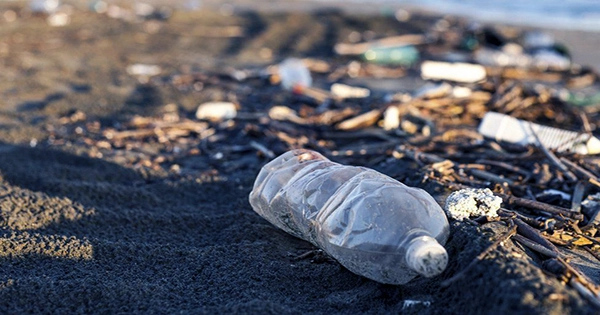Annually, 359 million tons of plastic trash created, with 150-200 million tons ending up in landfills or the environment. Scientists at the University of Texas in Austin think they’ve found a way for an enzyme variation to break down plastic in a matter of days. Only around 10% of all plastic gets recycled globally. Throwing plastic in a landfill or burning it is a frequent way of disposal, however garbage burning is expensive, pollutes the environment, and requires a lot of energy. Alternative industrial processes such as pyrolysis, glycolysis, and methanolysis are similarly energy-intensive thermochemical degradation procedures.
Biological alternatives, which are less energy-intensive and (fortunately for the earth) are quickly progressing, may offer an answer to these old waste disposal approaches. On the negative, no study has been able to develop enzymes that operate well at low temperatures, which is critical for industrial mobility and cost. Until now, that is! PET comprises approximately 12% of all worldwide garbage and is a polymer present in many single-use products and textiles, according to the study published in Nature, which aimed to develop a plastic-eating enzyme that might help, reduce billions of tons of landfill debris.
“The opportunities for leveraging this cutting-edge recycling method are boundless across sectors,” said Hal Alper, a professor at UT Austin’s McKetta Department of Chemical Engineering and one of the study’s researchers. “Aside from the obvious waste management industry, this also allows businesses from all sectors to take the lead in recycling their products.” We may start to imagine a genuine circular plastics economy using these more sustainable enzyme techniques.” A machine learning algorithm was used to create a unique mutation to a naturally occurring enzyme called PETase, which allows bacteria to breakdown PET polymers. At low temperatures, the model could forecast which were better for breaking down post-consumer waste plastic.
FAST-PETase was the most effective enzyme (functional, active, stable, and tolerant PETase). This enzyme may be involved in the cyclical process, which allows the plastic to be broken down into smaller pieces (depolymerization) and subsequently reassembled (repolymerization). The researchers tested FAST-PETase on over 50 different varieties of plastic and discovered that it can act at temperatures as low as 50 degrees Celsius (122 degrees Fahrenheit), which can be utilized on some untreated PET. In as little as 24 hours, certain polymers may be broken down to monomers.
“The opportunities for leveraging this cutting-edge recycling technology are unlimited across sectors,” Alper said. “Beyond the obvious waste management industry, this also allows firms from every sector the potential to take a lead in recycling their products.” We may start to imagine a genuine circular plastics economy using these more sustainable enzyme techniques.” “An enzyme that can act in the environment at room temperature is required for environmental remediation applications.”
This is an area where our technology will have a significant edge in the future. The researchers are currently working on scaling up enzyme production for environmental and industrial purposes. This method has also been granted a patent, with potential applications including landfill cleanup and greening, environmental remediation, and perhaps deploying enzymes in the field to clean up contaminated locations.
















